Category
Popular Articles
- AI (12)
- Android (38)
- App Suggest (4)
- Apple (15)
- Apple TV (2)
- Bluetooth (3)
- Cars (2)
- ChatGpt (1)
- Chrome (2)
- Did you know? (1)
- E-Commerce News (1)
- Ecommerce Websites business (7)
- Electronics Shopping (5)
- Fashion Tips (3)
- Gaming (4)
- Google Gemini (3)
- Hair Care Tips (2)
- How to (13)
- iCloud (1)
- Infotainment System (1)
- Iphone (101)
- Job Posting (1)
- Lifestyle (3)
- Mac (20)
- Mobile Games (1)
- Netflix (1)
- Online Shopping Websites (2)
- Personal Finance Management (3)
- Product Reviews (3)
- Roku TV (4)
- Samsung (9)
- Shopping Tips (10)
- Spotify (1)
- Tech (92)
- Windows 11 (18)
- Zero Waste (3)
Discounted Products
-
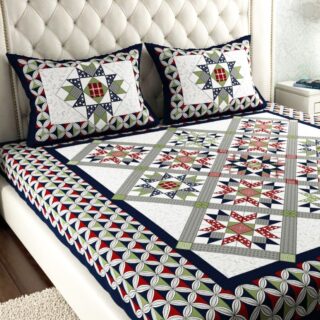 Leo Creation 144 TC Cotton Double Jaipuri Prints Flat Bedsheet(Pack of 1, Blue, Gree, Red, Grey, Light Grey)
Leo Creation 144 TC Cotton Double Jaipuri Prints Flat Bedsheet(Pack of 1, Blue, Gree, Red, Grey, Light Grey)
₹2,999.00Original price was: ₹2,999.00.₹329.00Current price is: ₹329.00. -
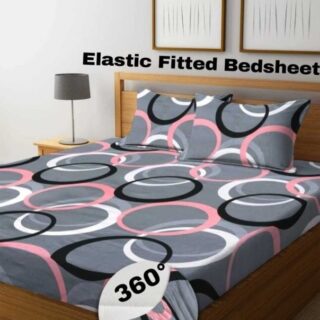 Home Garage 210 TC Cotton King Floral Fitted (Elastic) Bedsheet(Pack of 1, Grey)
Home Garage 210 TC Cotton King Floral Fitted (Elastic) Bedsheet(Pack of 1, Grey)
₹999.00Original price was: ₹999.00.₹299.00Current price is: ₹299.00. -
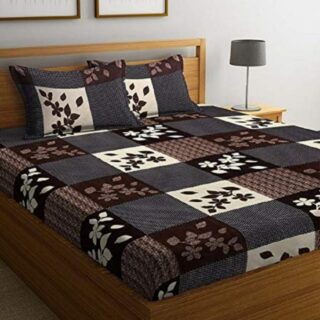 Goodrik 140 TC Cotton Double 3D Printed Flat Bedsheet(Pack of 1, Brown)
Goodrik 140 TC Cotton Double 3D Printed Flat Bedsheet(Pack of 1, Brown)
₹499.00Original price was: ₹499.00.₹229.00Current price is: ₹229.00. -
 GLOBALSHOP 350 TC Microfiber Double Floral Flat Bedsheet(Pack of 1, Multicolor)
GLOBALSHOP 350 TC Microfiber Double Floral Flat Bedsheet(Pack of 1, Multicolor)
₹1,250.00Original price was: ₹1,250.00.₹263.00Current price is: ₹263.00. -
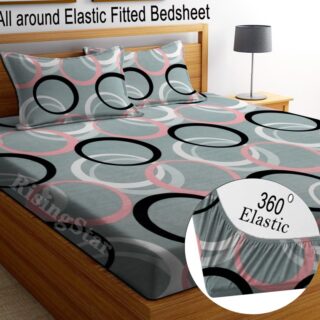 RisingStar 250 TC Microfiber King Printed Fitted (Elastic) Bedsheet(Pack of 1, FITTED-ROUND-CIRCLES-PREMIUM)
RisingStar 250 TC Microfiber King Printed Fitted (Elastic) Bedsheet(Pack of 1, FITTED-ROUND-CIRCLES-PREMIUM)
₹2,299.00Original price was: ₹2,299.00.₹299.00Current price is: ₹299.00. -
 Home Garage 210 TC Cotton King Floral Fitted (Elastic) Bedsheet(Pack of 1, Fitted Black Green)
Home Garage 210 TC Cotton King Floral Fitted (Elastic) Bedsheet(Pack of 1, Fitted Black Green)
₹1,299.00Original price was: ₹1,299.00.₹299.00Current price is: ₹299.00. -
 Home Garage 180 TC Cotton King 3D Printed Flat Bedsheet(Pack of 1, White)
Home Garage 180 TC Cotton King 3D Printed Flat Bedsheet(Pack of 1, White)
₹999.00Original price was: ₹999.00.₹229.00Current price is: ₹229.00. -
 Home Sizzler 153 cm (5 ft) Polyester Room Darkening Window Curtain (Pack Of 2)(Floral, Maroon)
Home Sizzler 153 cm (5 ft) Polyester Room Darkening Window Curtain (Pack Of 2)(Floral, Maroon)
₹799.00Original price was: ₹799.00.₹299.00Current price is: ₹299.00. -
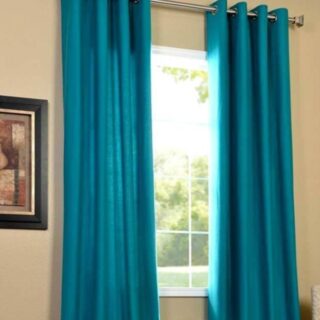 Panipat Textile Hub 152.4 cm (5 ft) Polyester Window Curtain (Pack Of 2)(Solid, Aqua)
Panipat Textile Hub 152.4 cm (5 ft) Polyester Window Curtain (Pack Of 2)(Solid, Aqua)
₹1,899.00Original price was: ₹1,899.00.₹299.00Current price is: ₹299.00. -
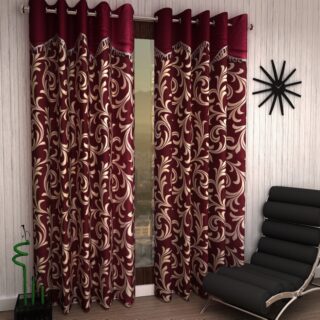 Home Sizzler 214 cm (7 ft) Polyester Semi Transparent Door Curtain (Pack Of 2)(Floral, Maroon)
Home Sizzler 214 cm (7 ft) Polyester Semi Transparent Door Curtain (Pack Of 2)(Floral, Maroon)
₹1,199.00Original price was: ₹1,199.00.₹399.00Current price is: ₹399.00. -
 Home Sizzler 153 cm (5 ft) Polyester Room Darkening Window Curtain (Pack Of 2)(Floral, Brown)
Home Sizzler 153 cm (5 ft) Polyester Room Darkening Window Curtain (Pack Of 2)(Floral, Brown)
₹799.00Original price was: ₹799.00.₹299.00Current price is: ₹299.00. -
 Stella Creations 214 cm (7 ft) Polyester Room Darkening Door Curtain (Pack Of 2)(Abstract, Brown)
Stella Creations 214 cm (7 ft) Polyester Room Darkening Door Curtain (Pack Of 2)(Abstract, Brown)
₹1,299.00Original price was: ₹1,299.00.₹449.00Current price is: ₹449.00. -
 Homefab India 152.5 cm (5 ft) Polyester Room Darkening Window Curtain (Pack Of 2)(Floral, Light Blue)
Homefab India 152.5 cm (5 ft) Polyester Room Darkening Window Curtain (Pack Of 2)(Floral, Light Blue)
₹1,199.00Original price was: ₹1,199.00.₹319.00Current price is: ₹319.00. -
 Urban Home 214 cm (7 ft) PVC Transparent Door Curtain Single Curtain(Solid, Off White)
Urban Home 214 cm (7 ft) PVC Transparent Door Curtain Single Curtain(Solid, Off White)
₹699.00Original price was: ₹699.00.₹203.00Current price is: ₹203.00. -
 Panipat Textile Hub 213 cm (7 ft) Polyester Door Curtain (Pack Of 2)(Solid, Brown)
Panipat Textile Hub 213 cm (7 ft) Polyester Door Curtain (Pack Of 2)(Solid, Brown)
₹1,199.00Original price was: ₹1,199.00.₹349.00Current price is: ₹349.00.
Affiliate Links
Promotion

Hi friends, Jessica here! Like many of you, I spend a lot of time on video calls — for work meetings, catching up with family, or even helping my kids with their online classes. But let’s be honest: most built-in laptop webcams are grainy, poorly lit, and just don’t cut it in 2025. The good news? If you already own an iPhone, you have a high-quality webcam sitting right in your pocket.
Apple and third-party apps make it surprisingly easy to use your iPhone as a webcam for your laptop, PC, or Mac. Let me walk you through everything you need to know.
Why Use Your iPhone as a Webcam?
Before diving into the “how,” let’s talk about the “why.”
- Superior Camera Quality: Even older iPhones beat most laptop webcams.
- Better Lighting & Focus: Portrait Mode blurs backgrounds for a professional look.
- Flexibility: You can mount your iPhone at different angles, unlike a fixed laptop camera.
- Cost Savings: Instead of buying a $100+ external webcam, you can repurpose your iPhone.
For me, it was a game-changer during remote work meetings. My coworkers instantly noticed how crisp and clear my video looked compared to my laptop camera.
Method 1: Using Continuity Camera (Mac Only)
If you’re on a Mac running macOS Ventura or later and have an iPhone running iOS 16 or later, you don’t need extra apps — Apple built this feature right in.
Steps to Use Continuity Camera:
- Update Software: Make sure your Mac is on Ventura (or newer) and your iPhone is on iOS 16+.
- Enable Continuity Camera: On your iPhone, go to Settings > General > AirPlay & Handoff and toggle Continuity Camera Webcam on.
- Connect Your iPhone: Place it near your Mac — it can connect wirelessly or via USB.
- Select iPhone as Webcam: Open Zoom, Teams, or FaceTime, then choose your iPhone from the video input options.
Bonus Features:
- Center Stage: Keeps you in frame even if you move.
- Studio Light: Brightens your face and dims the background.
- Desk View: Shows your desk area (great for demos).
As a mom, I love Desk View when I’m helping my kids with school projects and need to show something on paper.
Method 2: Using Apps for Windows & Mac
If you’re on a Windows laptop or desktop, or you want more control, third-party apps are your best bet. Here are some popular ones:
1. EpocCam (by Elgato)
- Works on both Windows and Mac.
- Free version available (with watermarks).
- Paid version unlocks HD, audio, and more controls.
- Simply install the app on your iPhone and drivers on your PC/Mac, then connect via Wi-Fi or USB.
2. iVCam
- Windows-only, but offers smooth streaming.
- Supports Full HD and even 4K quality.
- Lets you adjust brightness, focus, and zoom directly.
3. Reincubate Camo
- High-quality video with advanced controls.
- Works on both Windows and Mac.
- Free and Pro plans (Pro unlocks 4K, green screen, overlays).
I’ve tried Camo for a few work calls — the sharpness is incredible, and it feels almost like having a DSLR hooked up.
Method 3: Using QuickTime (Mac Only, Wired)
This is a little old-school but reliable.
- Plug your iPhone into your Mac with a USB cable.
- Open QuickTime Player.
- Click File > New Movie Recording.
- Select your iPhone from the drop-down menu next to the record button.
While it’s not as polished as Continuity Camera, it works in a pinch.
Tips for the Best Webcam Setup
Once you have your iPhone working as a webcam, here are some pro tips I’ve learned:
- Mount Your iPhone Properly
A tripod or phone mount clipped to your laptop helps keep the angle flattering. I use a simple clip-on mount that holds my iPhone above my MacBook screen. - Lighting Matters
Sit facing a window or use a ring light. Even the best iPhone camera looks dull in bad lighting. - Use Rear Camera for Best Quality
The back camera is sharper than the front. Apps like Camo let you use it while still previewing the image on your screen. - Stabilize Your Connection
Wired (USB) connections are usually smoother and have less lag than Wi-Fi. - Keep Battery in Mind
Video streaming drains your iPhone fast — plug it in during long meetings.
Common Problems and Fixes
- iPhone Not Detected: Check if Wi-Fi is on or try a different USB cable.
- Laggy Video: Switch from Wi-Fi to USB for a stable feed.
- Blurry Image: Tap your iPhone screen to refocus or clean the lens.
- App Keeps Disconnecting: Make sure both devices are on the same network (for wireless setups).
Is It Worth It vs. Buying a Webcam?
From my perspective, yes — absolutely. External webcams can be good, but they still can’t match the crispness and smart features of the iPhone camera. Plus, this way, I save money and use what I already have.
If you’re on Mac, Continuity Camera makes the process effortless. If you’re on Windows, third-party apps take a little setup but deliver professional results.
Final Thoughts
Using your iPhone as a webcam is one of those “why didn’t I do this sooner?” tricks. Whether you’re working from home, attending virtual classes, or catching up with grandparents on Zoom, the difference in video quality is night and day.
As a mom and a professional, I’ve found it helps me look more polished in meetings without buying extra gadgets. And honestly, having one less device to keep track of is always a win in my book.
So, dust off that tripod, download an app (if needed), and give your iPhone a new role — your ultimate webcam.
Written by Bazaronweb
Latest Tech Articles
- 5 Ways to Backup and Restore Registry Settings in Windows
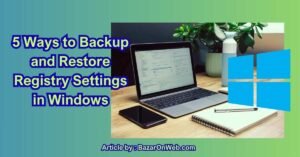
- iMessage Not Syncing Between iPhone & Mac? 8 Proven Ways to Fix Account & Device Issues
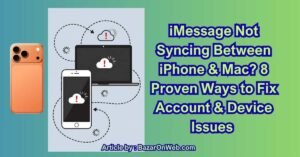
- Outlook Not Receiving Emails? 8 Proven Fixes for Windows, Mac & Mobile

- Zoom Not Connecting? 7 Ways to Fix Meeting Join Errors on Windows & Mac

- Microsoft Teams Not Opening? 5 Proven Fixes to Restart Your Workspace

Products
-
![Apple Watch Ultra 3 [GPS + Cellular 49mm] Running & Multisport Smartwatch w/Rugged Titanium Case w/Black Titanium Milanese Loop - M. Satellite Communications, Advanced Health & Fitness Tracking](https://bazaronweb.com/retailstores/wp-content/uploads/2025/09/apple-watch-320x320.jpg) Apple Watch Ultra 3 [GPS + Cellular 49mm] Running & Multisport Smartwatch w/Rugged Titanium Case w/Black Titanium Milanese Loop - M. Satellite Communications, Advanced Health & Fitness Tracking
Apple Watch Ultra 3 [GPS + Cellular 49mm] Running & Multisport Smartwatch w/Rugged Titanium Case w/Black Titanium Milanese Loop - M. Satellite Communications, Advanced Health & Fitness Tracking
-
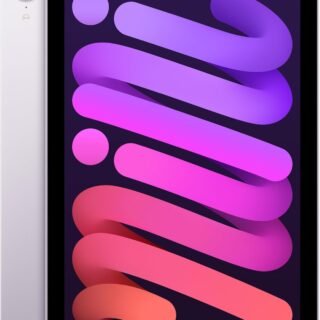 Apple iPad mini (A17 Pro): Apple Intelligence, 8.3-inch Liquid Retina Display, 256GB, Wi-Fi 6E, 12MP Front/12MP Back Camera, Touch ID, All-Day Battery Life — Purple
Apple iPad mini (A17 Pro): Apple Intelligence, 8.3-inch Liquid Retina Display, 256GB, Wi-Fi 6E, 12MP Front/12MP Back Camera, Touch ID, All-Day Battery Life — Purple
-
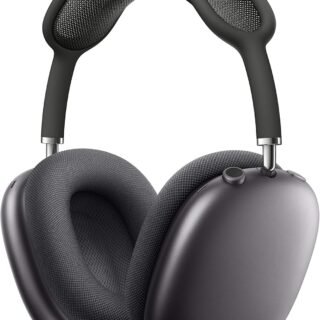 Apple AirPods Max Wireless Over-Ear Headphones, Active Noise Cancelling, Transparency Mode, Personalized Spatial Audio, Dolby Atmos, Bluetooth Headphones for iPhone – Space Gray
Apple AirPods Max Wireless Over-Ear Headphones, Active Noise Cancelling, Transparency Mode, Personalized Spatial Audio, Dolby Atmos, Bluetooth Headphones for iPhone – Space Gray
-
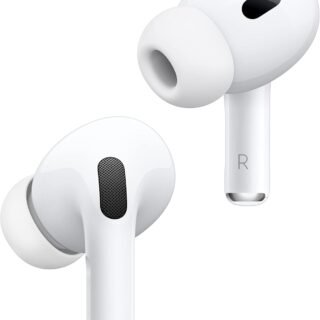 Apple AirPods Pro 2 Wireless Earbuds, Active Noise Cancellation, Hearing Aid Feature, Bluetooth Headphones, Transparency, Personalized Spatial Audio, High-Fidelity Sound, H2 Chip, USB-C Charging
Apple AirPods Pro 2 Wireless Earbuds, Active Noise Cancellation, Hearing Aid Feature, Bluetooth Headphones, Transparency, Personalized Spatial Audio, High-Fidelity Sound, H2 Chip, USB-C Charging
-
 Leo Creation 144 TC Cotton Double Jaipuri Prints Flat Bedsheet(Pack of 1, Blue, Gree, Red, Grey, Light Grey)
Leo Creation 144 TC Cotton Double Jaipuri Prints Flat Bedsheet(Pack of 1, Blue, Gree, Red, Grey, Light Grey)
₹2,999.00Original price was: ₹2,999.00.₹329.00Current price is: ₹329.00.
Leave a Reply